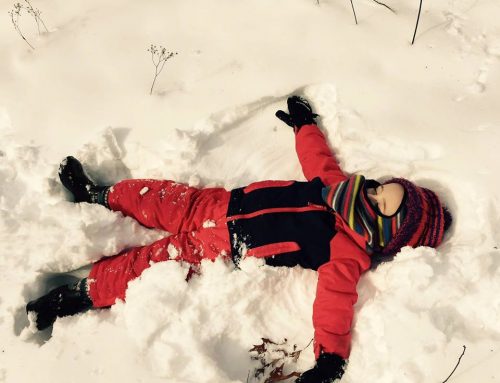
This vintage gym class photo recently made the rounds on social media. Many people who grew up in the 1960s and 1970s had a good laugh at the memories it brought back. At first glance this doesn’t look like such a bad activity. Just some children testing their meddle against a climbing rope while other children patiently wait their turn. But if you did grow up during this time you probably know there is more to it that this picture reveals… Dig a bit deeper on Google you will find there is a second picture from this same scene a few minutes later.
The camera pans out to reveal the two children two stories up the rope over a thin horsehair mat. Two classmates gamely sit directly in the danger zone under each rope and hold them steady. Parents today will look at this scene and think, what on earth is wrong with that teacher? Those children are sure to fall and break their necks! That’s crazy and children should never be exposed to such risk!
Speaking as someone who survived this activity, I can tell you that nobody did fall or get seriously injured. Most children knew that letting go was not a option. This did often lead to rope burns… but we still LOVED this activity. When we arrived and saw the ropes hanging down, excitement mixed with a healthy dose of fear filled the gym. In my school, there was also a giant cargo net, swinging rings, peg climbing board and a trampoline. Despite the nerves, this was the best part of gym and SO much better than kickball, calisthenics or the draconian dodgeball… What made this activity so supremely satisfying was the actual risk that was involved. What made it interesting was that we could accept the challenge and manage our individual risk by deciding how high we would climb. And that is the key to healthy risk. By allowing a child to choose when they are ready and how much risk they are comfortable accepting, the benefits start to outweigh the risks. By providing them with opportunities to challenge themselves so they can learn the limits of their own abilities (and know when a risk is too great), the risk is minimized.
Stephen Kellert, renowned researcher from Yale passed away at the end of November. Dr. Kellert left behind a legacy of research on humans and the intrinsic need they have for interaction with nature. Dr. Kellert worked with E.O. Wilson to develop the theory of biophilia. Biophilia is the theory that humans need access to nature, not just to satisfy physical needs like food, air and shelter, but to fulfill “a human craving for aesthetic, intellectual, cognitive, and even spiritual meaning and satisfaction.”
Dr. Kellert also focused his research on children’s experiences in nature and the importance of healthy risk taking for healthy development. In one of his more recent books he explored how natural environments provide a level of risk and unpredictability that is critical for humans to develop resiliency.
“The direct experience of nature also extends to the child the possibilities of uncertainty, risk,
and failure. These realities necessitate adaptation and problem solving as well as the need
to construct solutions and to think critically, all of which are essential to lasting learning and
maturation. These conditions rarely arise when children passively watch television, visit a
zoo, manipulate a computer screen, or even in most classrooms.”
So maybe those gym teachers were on to something. Maybe they realized children need a challenge that involves some unpredictably to enhance development. We know this intrinsically ourselves, as adults we are often nostalgic for the days of our childhood and the freedom we were given. The hours we spent outside afterschool only to come home upon hearing the siren call of the 6 pm fire whistle or the flash of street lights warming up. We knew our cue to head home and we ran home tired, dirty and happy. The promise of this extended, unstructured outdoor play on a daily basis helped us make it through each school day. But unfortunately, our own children are rarely afforded the same opportunities, either in school or out. We lament the lack of recess and at the same time are afraid to allow our children the freedom to run around outside unsupervised, to let them lead their own play and take healthy risks.
Many of our preschool parents understand this acutely. When their children outgrow our preschool and move into elementary school the children cry foul when they get home after the first week, “Hey! We didn’t get to go outside to play!”. Try as they might, public schools are burdened by rigid curriculum requirements and time constraints. At DPNC, many of our programs are developed in direct response to this need. Our programs give children the recess they didn’t get at school, a taste of the freedom of days past and challenging outdoor play. While we explore and learn about nature we run, jump, climb, build and take those healthy risks. Children benefit from unstructured play over the diverse terrain of the nature center while our educators help keep things safe and in many cases even help children learn how to take the healthy risks needed to grow into healthy adults.
Check out the wide variety of programs DPNC offers that provides healthy unstructured outdoor play including our Nature Preschool, Nature Kids Afterschool program and upcoming Summer Nature Camp!








